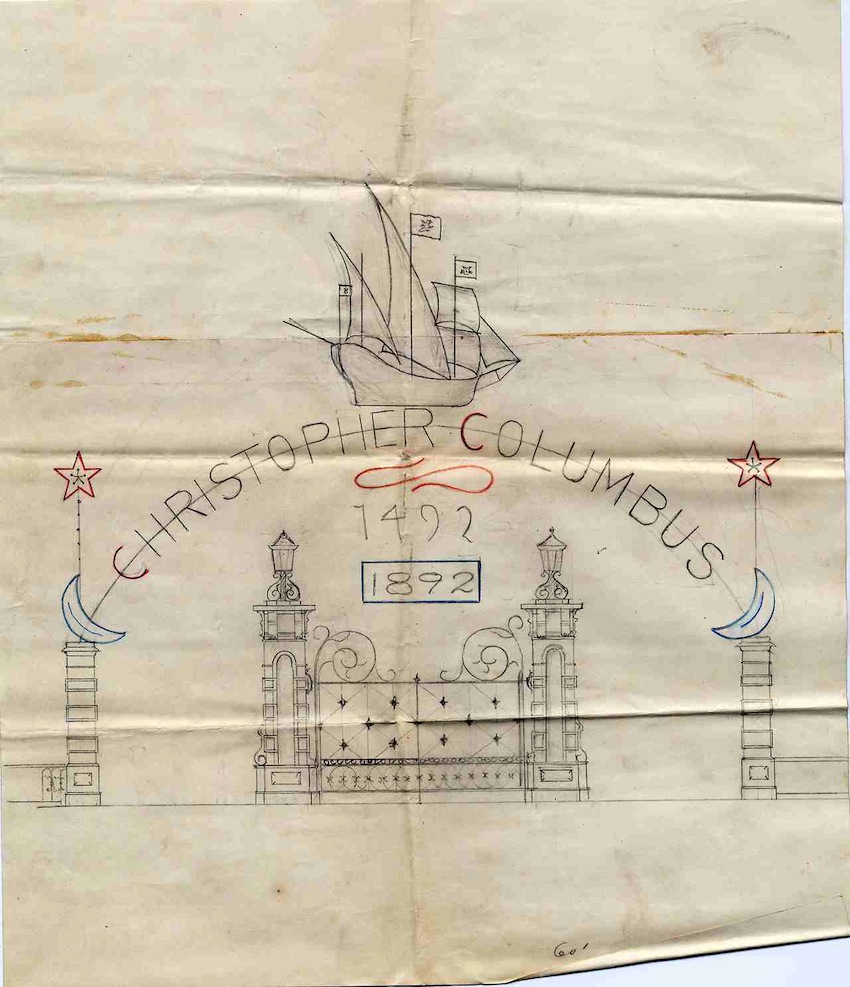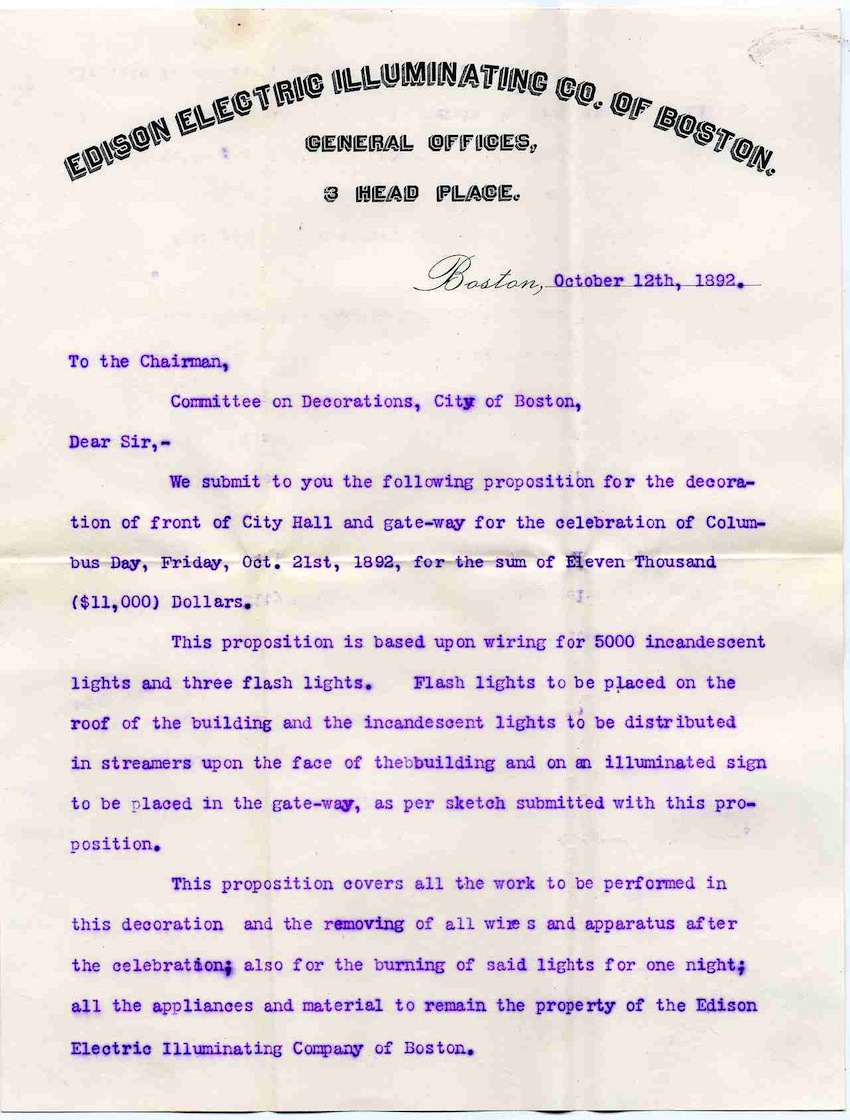This Is How They Wanted To Celebrate Columbus Day in Boston in 1892
While Columbus Day has become a day off for most workers, at one point in time an electric company wanted to celebrate the holiday by illuminating a city building with an extravagant display of lights, stars, and a make-shift sailboat.
On Monday, the City of Boston Archives posted paperwork submitted to the Council Committee on the Celebration of Columbus Day, dating back to 1892, 400 years after explorer Christopher Columbus allegedly landed on the shores of what would later become the United States.
The paperwork—a proposal submitted by the general offices of the Edison Electric Illuminating Company—called for the illumination of City Hall for the annual holiday, complete with a metal awning over the doorway, bearing Columbus’s name, and a replica boat that the European adventurer allegedly sailed in on in 1492.
Claims that Columbus discovered “the New World” have been dismissed over the years, because people were already inhabiting the land he claimed he had stumbled upon. Other misconceptions commonly taught in schools have also been debunked by historical artifacts.
According to History buffs, the first recorded celebration of “Columbus Day” happened in New York City on October 12, 1792, as part of a day of recognition for the Italian-American heritage. It became a nationally recognized holiday in the 1930’s, through a proclamation signed by President Franklin Delano Roosevelt.
The proposition to turn the front of Boston’s City Hall into a brightly lit monument to celebrate Columbus’s achievements came 100 years after the initial recognition for the Italian-American heritage in New York.
The City of Boston archives show that the Edison Electric Company had set their sights on decorating the entryway of the government building by spending $11,000 on more than 5,000 incandescent lights, and three flashlights. The project also called on installing wires for the signage, and allowing the lights to burn “for one night.”
Here is the proposal submitted by the company, courtesy of the archives department:




